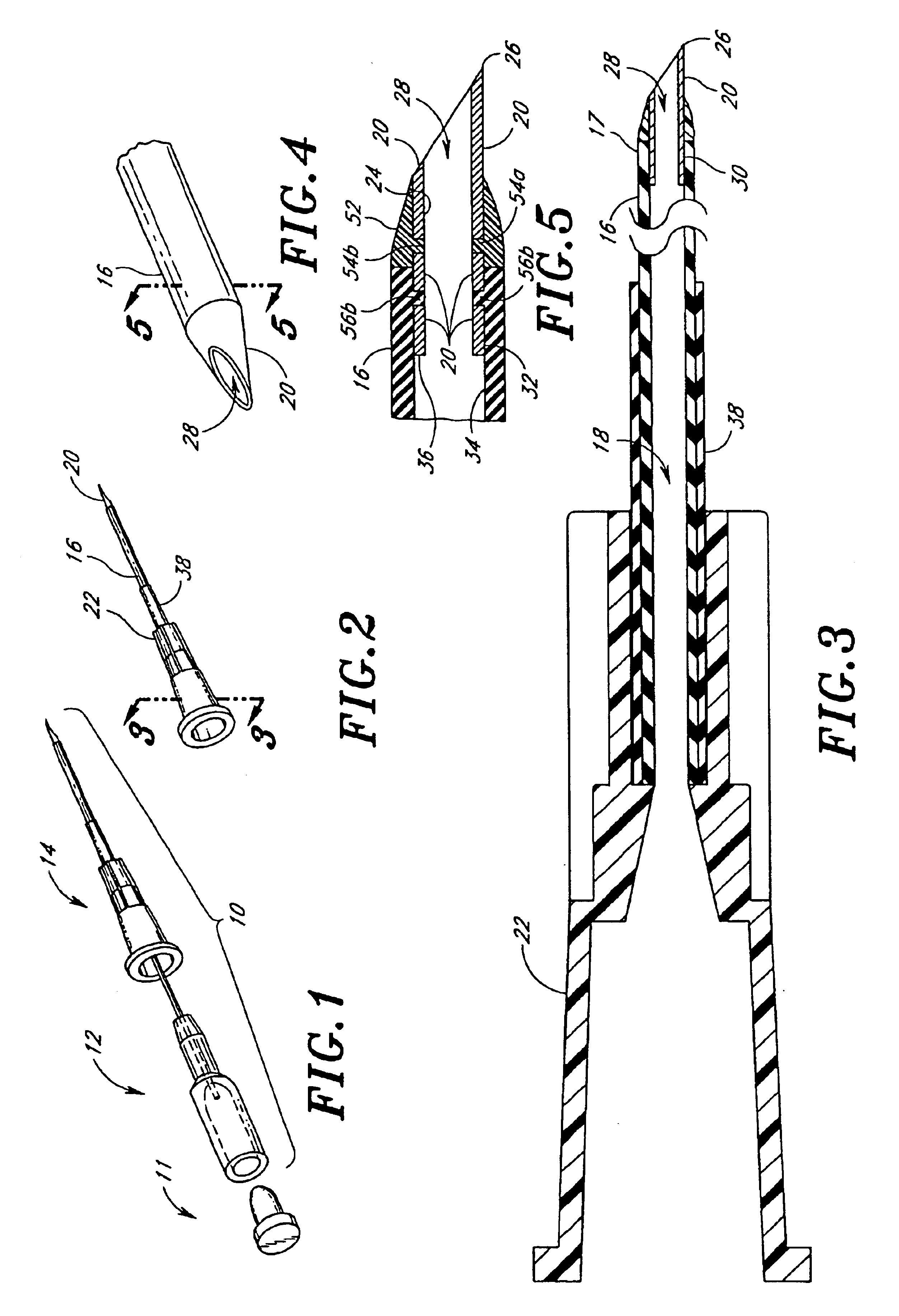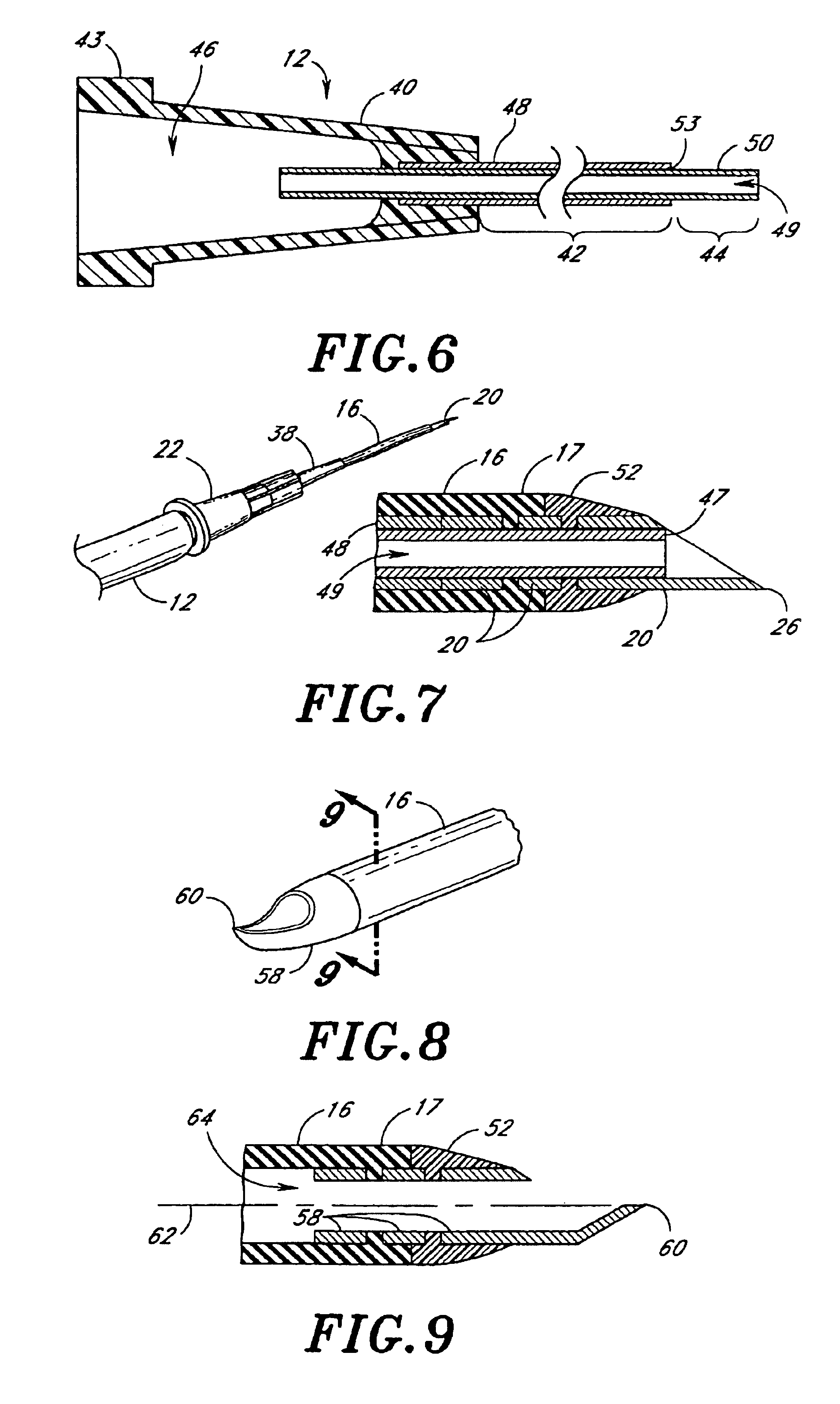Intravenous infusion needle with soft body
- Summary
- Abstract
- Description
- Claims
- Application Information
AI Technical Summary
Benefits of technology
Problems solved by technology
Method used
Image
Examples
Embodiment Construction
FIG. 1 depicts the improved catheter assembly 10 of the present invention. The catheter assembly 10 comprises a safety inserter 12 and a catheter 14.
Referring to FIGS. 2 and 3, the catheter 14 comprises a flexible tube 16 defining a lumen 18 therethrough. A sharpened needle tip 20 is secured to a distal end of the flexible tube 16. A hub 22 is formed at a proximal end of the catheter 14. The hub 22 facilitates connection of the catheter 14 with an administration line (not shown) to provide for the communication of fluids through the catheter 14, as will be easily understood by those skilled in the art.
The flexible tube 16 advantageously is preferably formed of a soft thermoplastic material. Preferably, the flexible tube 16 is formed of a material having a hardness value between 50 and 90 Shor A, more preferably between 65 and 85 Shor A, and most preferably approximately 70 Shor A. In a preferred embodiment, the flexible tube 16 is formed of polyurethane. A suitable polyurethane is s...
PUM
 Login to View More
Login to View More Abstract
Description
Claims
Application Information
 Login to View More
Login to View More - R&D
- Intellectual Property
- Life Sciences
- Materials
- Tech Scout
- Unparalleled Data Quality
- Higher Quality Content
- 60% Fewer Hallucinations
Browse by: Latest US Patents, China's latest patents, Technical Efficacy Thesaurus, Application Domain, Technology Topic, Popular Technical Reports.
© 2025 PatSnap. All rights reserved.Legal|Privacy policy|Modern Slavery Act Transparency Statement|Sitemap|About US| Contact US: help@patsnap.com



